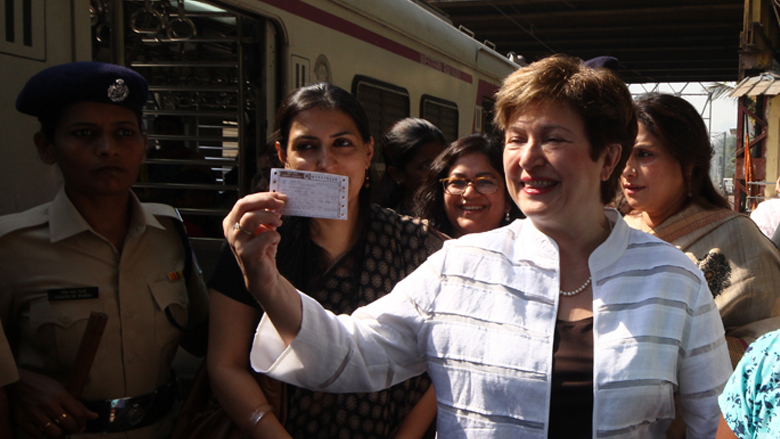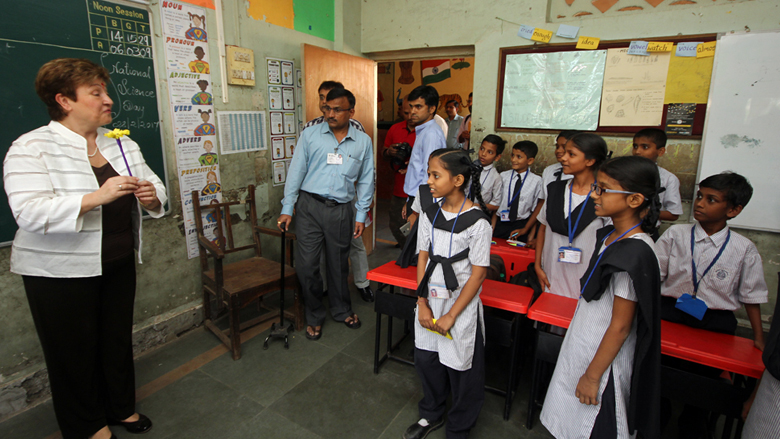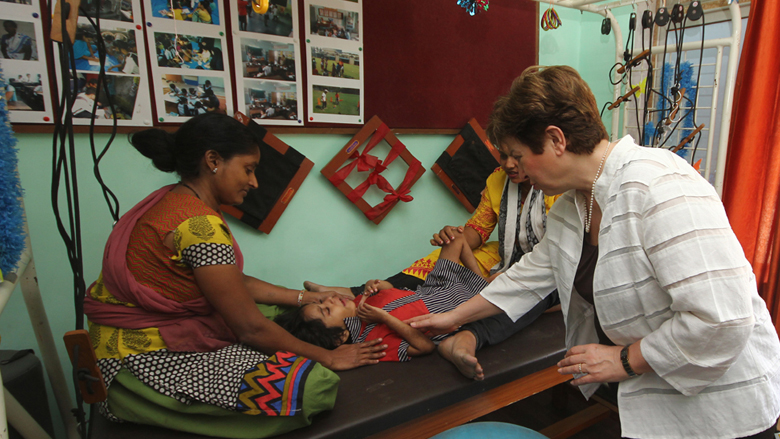Mumbai, February 28, 2017: Kristalina Georgieva, the World Bank’s Chief Executive Officer, arrived today on a two day visit to India - the World Bank’s largest client - as the country takes on a more complex set of challenges to meet its people’s rising aspirations.
Arriving in Mumbai, India’s largest metropolis, Georgieva saw first-hand how an India that is urbanizing at a pace and scale which has few parallels in history is striving to make its cities a better place for all its citizens.
Travelling in the second class ladies compartment of a suburban train from Churchgate to Dadar station, Georgieva got a sense of the volume of passengers who use the trains every day, and the challenges the Railways face in making the system safer, faster and more efficient.
Mumbai is one of the world’s most densely populated mega cities and its suburban trains carry some 8 million passengers a day, almost equal to the population of Switzerland. From 2002 onwards, a series of two World Bank supported projects - MUTP and MUTP 2A - have helped introduce new trains with higher speeds, better suspension systems, improved interiors, and a better ventilation system. The new trains have reduced energy consumption by 30 percent.
Aboard the ‘local’ – as the suburban trains are commonly called in Mumbai - Georgieva met women commuters who appreciated these improvements but wanted more to be done to make the trains safer.
“To meet the aspirations of Mumbaikars, some of whom I met today, the city will have to make massive investments in transport infrastructure. These investments will enable commuters to access more comfortable, safer and efficient services," Georgieva said. “The Bank is committed to support the government's efforts in this area – through investments that strengthen the government's capacity to leverage additional funds, including those from the private sector.”
A walk through Dharavi
Alighting at Dadar station, Georgieva walked through the narrow alleys of Dharavi, said to be one of Asia’s largest slums and the world’s third largest informal settlement.
Dharavi, made famous by the film Slum Dog Millionaire, teems with almost a million people who have flocked to the city from all corners of the country, and now live and work in a tightly packed melting pot spread across just two square kilometers in the heart of the city. The migrants’ drive and hard work has created a beehive of micro enterprises that pull in an estimated annual turnover of over US$1 billion.
In Dharavi’s dense warren of homes and workshops, where slippers are lined up neatly outside doorways, Georgieva saw first-hand the challenges of urban service delivery in a city where one-third of the residents live in slums.




